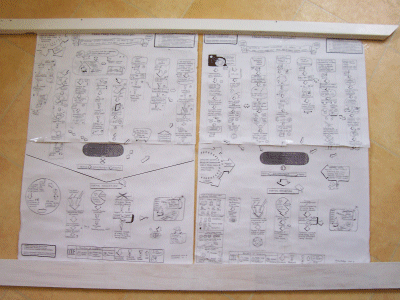| David
Parker Presentation (Communication Rationale ) |
|||||
|
Return to presentation to NZ Minister of Energy & Climate Issues
|
Principle of energy: “When a symbol use works to deny change it will materially alter the potential of the universe (energy) in a way that results in a reduction in the capacity of the symbol user to mirror reality. When a symbol use works for the acceptance of change it will increase the capacity of the symbol user to mirror reality.” Below are two charts summarising (1) my 2002 exploration of why our
National Energy Efficiency and Conservation Strategy and our (2) my proposal for reducing the
conflict. I concluded that the essential issue both strategies share is our use of air. In particular the central knowledge we need to communicate to people is the thermal capacity of air. This is summed up in the statement (see central dark area of posters):
In the first poster I
explored how current symbol uses such as greenhouse images of the
atmosphere deny air's capacity for change. The use of such symbols
generate confusion central to both strategies. The In the second poster I suggest that the use of the Trace symbol as in Trace Gases removes this central source of conflict. In so doing supports the Principles of Energy and promotes awareness and acceptance of change. In particular the Trace model promotes learning activities exploring the nature of tiny proportions and large leverage i.e. works to provide the essentials required for understanding change in weather systems.
Return to 2006 Presentation to NZ Minister of Energy & Climate Issues |
|
|||

